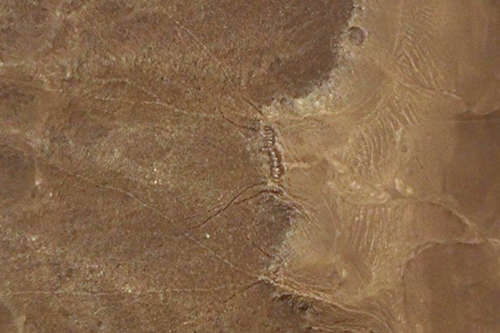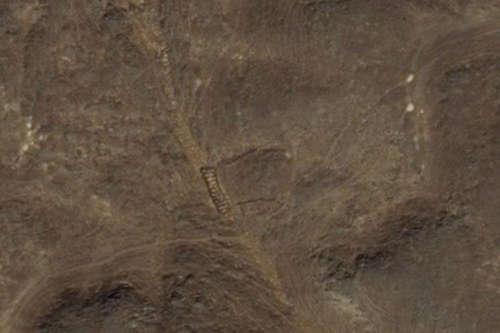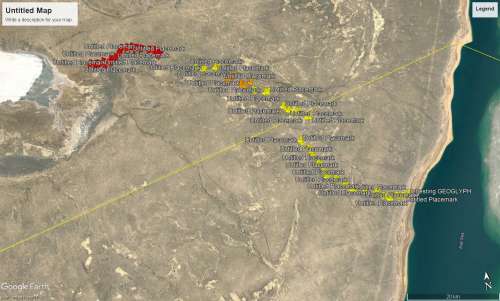Full Member
November 2020 - Sept 25, 2024 11:02:30 GMT
|
Post by bemerkenswelt on Apr 1, 2022 18:43:00 GMT
Kites or kite-like traps can be found in many parts of the world and they are wonderful structures to see in GE. In the 1920s, British military pilots were the first to spot these strange shapes from the heights while flying over the Jordanian desert. Because their shapes resembled children's kites held on strings, they gave them the name Desert Kites.For a long time, researchers did not know exactly what these strange creations were all about. Today, it is generally agreed that they are trapping devices for large herds of wild animals. Dates are still rare, but the oldest date back to around 8,000 BC, while there are indications that they were used until recent times.
More information about this unique artifacts you can find here > – and here>
The classic Desert Kite from the Levant region looks like this:
|
|
Full Member
November 2020 - Sept 25, 2024 11:02:30 GMT
|
Post by bemerkenswelt on Apr 1, 2022 18:47:15 GMT
Way down south, in the Saudi Arabian Khybar region the kites look similar but very different.
More about Arabian desert kites you find here >
|
|
Full Member
November 2020 - Sept 25, 2024 11:02:30 GMT
|
Post by bemerkenswelt on Apr 1, 2022 18:57:30 GMT
Nothing was known about kites in the Sahara until August 2018, when an Italian archaeological team documented kites in the Libyan Desert. They look quite different to the classic desert kites in Near East. Here two or three converging walls form a funnel which leads the animals directly to only one pit fall at the end. This type of kites can be found from Israel and Sinai spread over whole North Africa until Western Sahara.
|
|
Full Member
November 2020 - Sept 25, 2024 11:02:30 GMT
|
Post by bemerkenswelt on Apr 1, 2022 19:29:56 GMT
In Central Asia kites have been discovered around the Ustyurt Plateau.
This plateau stretches between the Caspian Sea and the Aral Sea, over large areas of Uzbekistan and Kazakhstan. The people here have developed a more compact form of these game traps, which do not require kilometre-long guide fences. There are indications that they were used until the 19th century.
|
|
Master Cartographer
April 2015 - Nov 26, 2024 7:24:04 GMT
|
Post by syzygy on Apr 4, 2022 7:24:40 GMT
In Central Asia kites have been discovered around the Ustyurt Plateau... Once, on a boring March day I have mapped 75 desert kites in the region, since then I have wandered where and how to post 'em out. Excluding duplicates 9 placemarks are still remaining as new pieces to your collection. Mostly these are from low-resolution GE imagery spots, but you'll find ZoomEarth links for each one in placemarks' descriptions: Ustyurt kites for Manfred.kmz (1.58 KB) -- Many thanks for sharing these fascinating datasets with us, big congrats for your nice work as an independent researcher and for your cool web-page!  Very glad to know you around Manfred! Keep up the good work! G |
|
Full Member
November 2020 - Sept 25, 2024 11:02:30 GMT
|
Post by bemerkenswelt on Apr 4, 2022 10:42:00 GMT
In Central Asia kites have been discovered around the Ustyurt Plateau... Once, on a boring March day I have mapped 75 desert kites in the region, since then I have wandered where and how to post 'em out. Excluding duplicates 9 placemarks are still remaining as new pieces to your collection.
Thank you very much!
I have added the missing nine to my collection (see attachment).
A good source to locate kites is the Globalkites map >
(It takes a lot of time until kite positions load the first time - so be patient.)
Attachments:Ustyurt Kites.kmz (27.95 KB)
|
|
Full Member
November 2020 - Sept 25, 2024 11:02:30 GMT
|
Post by bemerkenswelt on Apr 5, 2022 14:39:03 GMT
In the Algerian Central Sahara the kite-like traps look like this. Mostly they have several pit falls and many of them are located close to something what formerly could have been a river or a lake. So I hypothesize that they hunted animals who lived in the water, like hippopotamus's  .
|
|
Master Cartographer
April 2015 - Nov 26, 2024 7:24:04 GMT
|
Post by syzygy on Apr 5, 2022 15:13:18 GMT
... I hypothesize that they hunted animals who lived in the water, like hippopotamus's.... I think these are too small pits for such big prey. I have done some measurements on ZoomEarth and it was cca. 1x3 meters for the pit-cells' dimensions. Also the very tight fit of the boxes is strange... These structures may need further investigation to find the valid explanation I think... |
|
Full Member
November 2020 - Sept 25, 2024 11:02:30 GMT
|
Post by bemerkenswelt on Apr 5, 2022 15:28:13 GMT
... I hypothesize that they hunted animals who lived in the water, like hippopotamus's.... I think these are too small pits for such big prey. I have done some measurements on ZoomEarth and it was cca. 1x3 meters for the pit-cells' dimensions. Also the very tight fit of the boxes is strange... These structures may need further investigation to find the valid explanation I think... You are right. On this three pictures you see exactly the opposite. Their direction is reversed, from land to water. So here the prey are animals who go from the land towards the water.
The many others whose direction is from water to land, have mostly only one, perhaps bigger pit. I didn't measure them. My job is to find them and I leave the scientific work, like measuring them to others (like syzygy).
|
|
March 2015 - May 1, 2023 4:20:37 GMT
|
Post by diane9247 on Apr 21, 2022 16:57:17 GMT
What do you think the purpose of the little circles at the end of the trap would be? My thought was that they make breaking through harder for animals trying to escape.
|
|
Master Cartographer
April 2015 - Nov 26, 2024 7:24:04 GMT
|
Post by syzygy on Apr 21, 2022 17:04:45 GMT
What do you think the purpose of the little circles at the end of the trap would be? My thought was that they make breaking through harder for animals trying to escape. Definetely! These are the so called "killing pits". 😯 So glad to see you around Diane! ( : |
|
Junior Member
September 2021 - Sept 23, 2024 14:04:01 GMT
|
Post by buildsancient on May 1, 2022 9:59:54 GMT
You guys might be wrong about the killing pits... Gabor, you might remember that chain I sent you that ran down into the Aral sea?
What if they were used by migratory tribes to bring livestock over large distances? It would be easy to funnel the livestock into the corral, and set up camp for the night, hemming them in.
If you remember, there were two sets of them. One above the other. But all leading to the same places.
This would enable travel in both directions at the same agreed upon time of year?
|
|
Junior Member
September 2021 - Sept 23, 2024 14:04:01 GMT
|
Post by buildsancient on May 1, 2022 10:06:31 GMT
|
|
Full Member
November 2020 - Sept 25, 2024 11:02:30 GMT
|
Post by bemerkenswelt on May 1, 2022 10:15:25 GMT
Hi, the cells around those structures are clearly pit falls for killing the animals. That was discussed for a long time, but now it's finally proved by fieldwork in Negev and Syria and elsewhere.
Have a nice Sunday Manfred
|
|
Junior Member
September 2021 - Sept 23, 2024 14:04:01 GMT
|
Post by buildsancient on May 1, 2022 10:45:23 GMT
Ah. Ok. But why have them going from point A to point B Manfred? Orderly spaced over a distance of 80km? That makes no sense.
Perhaps there are variations on the purpose. Some used for killing, and others for corralling? And migration?
Kind regards,
Mark.
|
|
Full Member
November 2020 - Sept 25, 2024 11:02:30 GMT
|
Post by bemerkenswelt on May 1, 2022 10:55:09 GMT
yes, that's an interesting question. In Syria, Jordania and Saudi Arabia we see these long lines of kites, for dozens of kilometers too.
Variations of purpose might be possible. We must not forget, that we know very little and almost everything is fantasy and theory, based on what we see.
|
|
Junior Member
September 2021 - Sept 23, 2024 14:04:01 GMT
|
Post by buildsancient on May 1, 2022 10:57:51 GMT
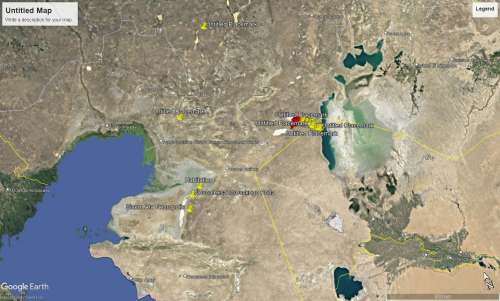 Just to give you an idea of scale. Unfortunately I have mixed these up between three countries folders. So sending you a KMZ is a bit of a challenge. My bad. |
|
Junior Member
September 2021 - Sept 23, 2024 14:04:01 GMT
|
Post by buildsancient on May 1, 2022 11:04:56 GMT
yes, that's an interesting question. In Syria, Jordania and Saudi Arabia we see these long lines of kites, for dozens of kilometers too.
Variations of purpose might be possible. We must not forget, that we know very little and almost everything is fantasy and theory, based on what we see.
Indeed. People forget that there are many uses for a knife. Carving, Skinning, Gutting, Chopping wood etc... We will never know all of it. But it sure is fascinating. BTW. Excellent job on the Africa KMZ. That was a LOT of work. You could go through that lot for a thousand years and still not be finished! |
|


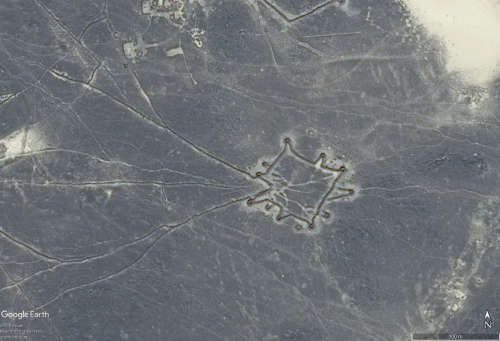
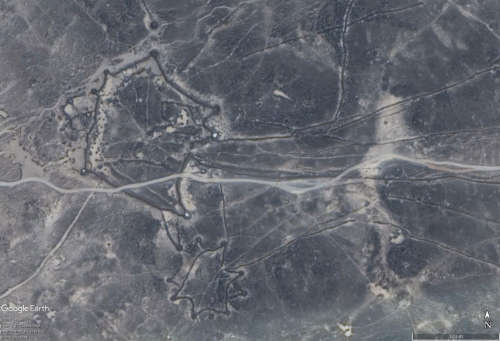
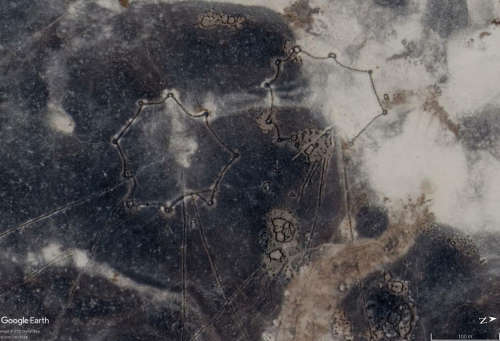
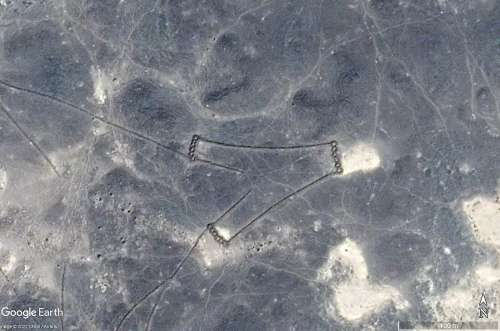
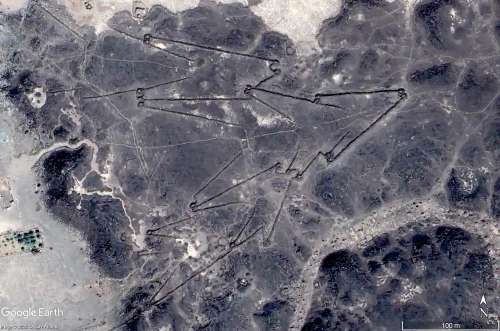
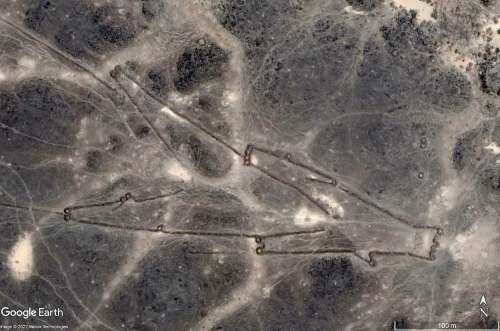
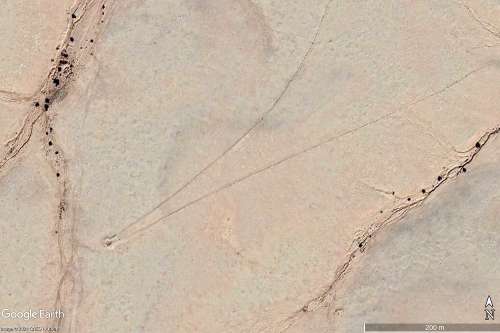

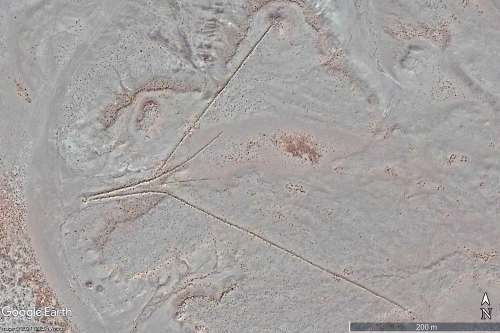
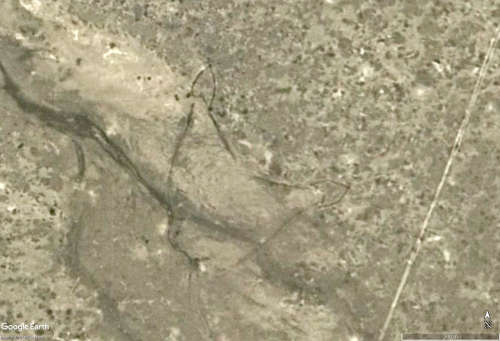
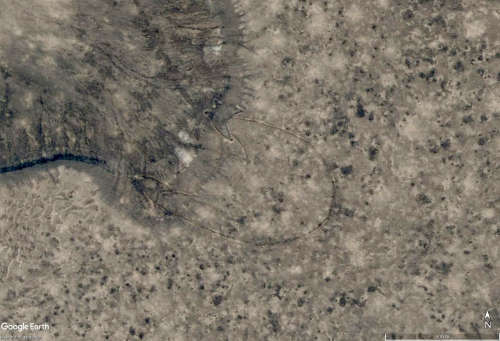
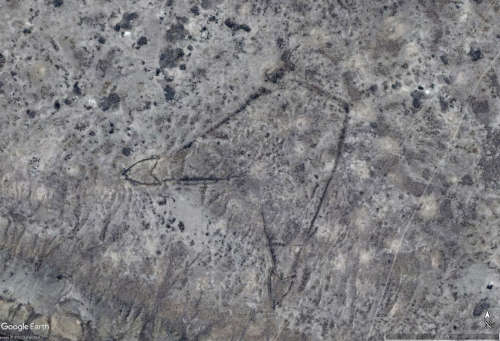

 .
.